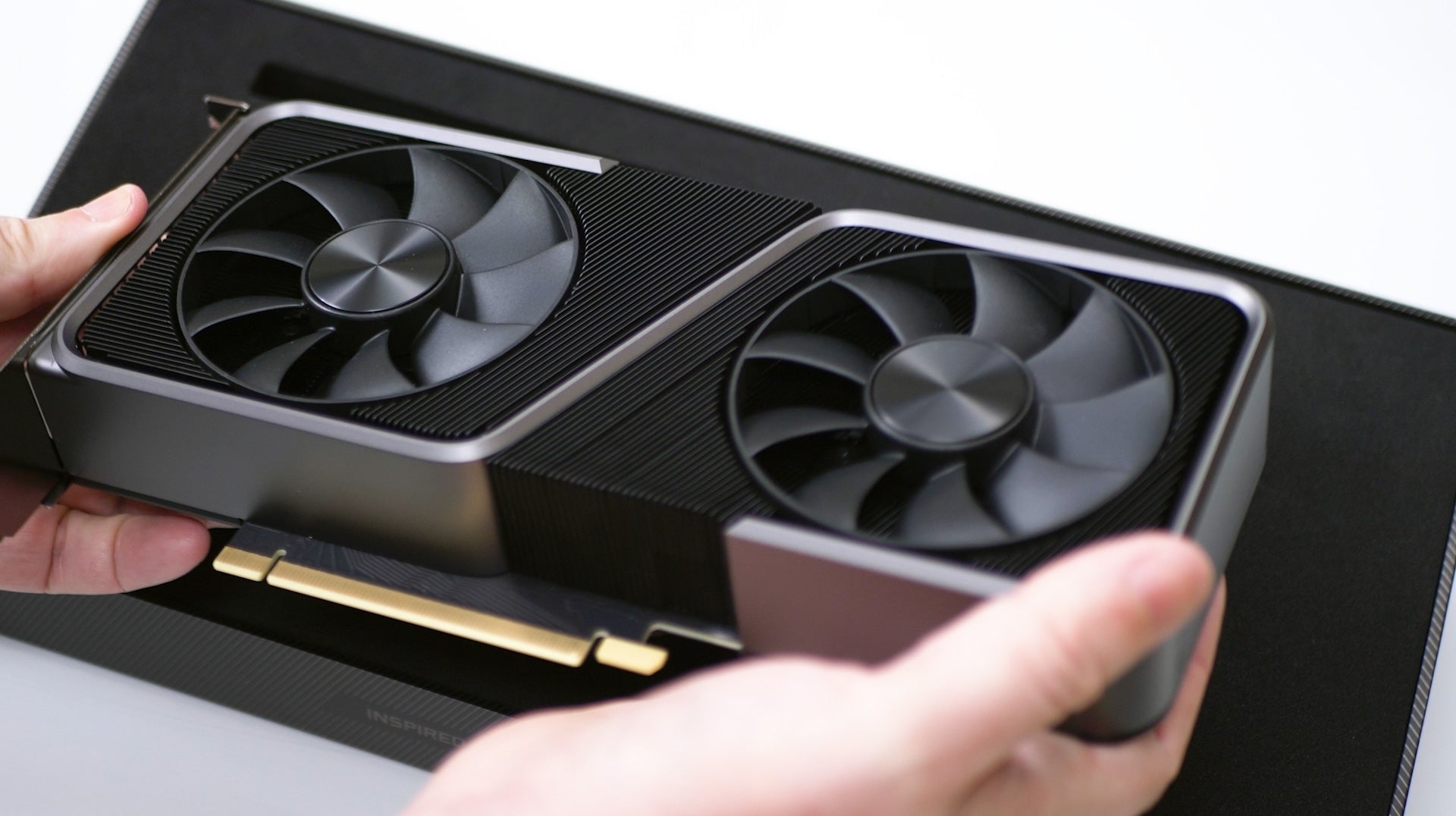Until September 2020, the RTX 2080 Ti was the fastest consumer graphics card on the market and retailed for $1000 – often more. Now, Nvidia’s new RTX 3070 is here, with Team Green promising the same level of graphics performance at $500, half the price. That’s a bold yet simple proposition that will no doubt spur a lot of upgrades, so does it hold water? We’ve been testing the 3070’s gaming performance and power efficiency for the past week to find out.
For what it’s worth, Nvidia certainly seems to be expecting a lot of demand. The RTX 3070 was originally set to go live in mid-October, but the launch was delayed by two weeks to build up inventory of the new cards and bulk up measures against automated purchases. The RTX 3080 and 3090 both sold out immediately and remain near-impossible to find six weeks post-launch, so let’s hope that availability is improved this time around.
So assuming for a moment that cards are available for purchase in any kind of reasonable time frame, how does the RTX 3070 deliver the kind of performance gains Nvidia is claiming?
Nvidia GeForce RTX 3070 Review: Is It Really As Fast As 2080 Ti? Watch on YouTube
Despite a delayed launch, the RTX 3070 will almost certainly sell out fast. Here’s where you can pre-order the RTX 3070 in the UK and US.
The answer lies in architectural improvements, mostly, including a die shrink from TSMC’s 14nm process to Samsung’s 8nm. That allows for many more transistors to be packed into a smaller space, unlocking both performance and efficiency gains. Combined with second-generation ray tracing and third-generation tensor cores, some seriously impressive gen-on-gen improvements can be achieved – as you can see from our generally complimentary RTX 3080 and RTX 3090 reviews.
The 3070 should push performance per dollar to even higher levels, while drawing less power (and therefore generating less heat). It boasts 5344 CUDA cores compared to the 2304 in the RTX 2070, with roughly the same clock speeds and a similar GDDR6 memory interface rather than the more expensive GDDR6X VRAM we saw on the 3080 and 3090. Compared to the RTX 2080 Ti, the 3070 has more CUDA cores but less power and less memory bandwidth, so it’ll be interesting to see how it compares in different titles.
1 of 9 Caption Attribution A first look at RTX 3070 out of the box – build quality is sufficiently impressive for a reference spec card.
| RTX 3080 | RTX 3070 | 2080 Ti | RTX 2080 | RTX 2070 | GTX 1070 | |
|---|---|---|---|---|---|---|
| GPU | GA102 | GA104 | TU102 | TU104 | TU106 | GP104 |
| CUDA cores | 8704 | 5888 | 4352 | 2944 | 2304 | 1920 |
| VRAM | 10GB GDDR6X | 8GB GDDR6 | 11GB GDDR6 | 8GB GDDR6 | 8GB GDDR6 | 8GB GDDR5 |
| Memory Bus | 320-bit | 256-bit | 352-bit | 256-bit | 256-bit | 256-bit |
| Bandwidth | 760GB/s | 448GB/s | 616GB/s | 448GB/s | 448GB/s | 256GB/s |
| Base Clock | 1440MHz | 1500MHz | 1350MHz | 1515MHz | 1410MHz | 1506MHz |
| Boost Clock | 1710MHz | 1725MHz | 1545MHz | 1800MHz | 1620MHz | 1683MHz |
| TDP | 320W | 220W | 250W | 225W | 175W | 150W |
| Die Size | 628mm2 | 392mm2 | 754mm2 | 545mm2 | 445mm2 | 314mm2 |
| Transistors | 28B | 17.4B | 18.6B | 13.6B | 10.8B | 7.2B |
For our review, we’re testing the RTX 3070 Founders Edition, which retails at the same $500/£450 RRP as entry-level custom designs from Nvidia’s partners. That’s a change from last-generation RTX 20-series FE models, which came with a factory overclock and a mildly higher power target but also cost around $100 more than the cheapest third-party equivalents.
